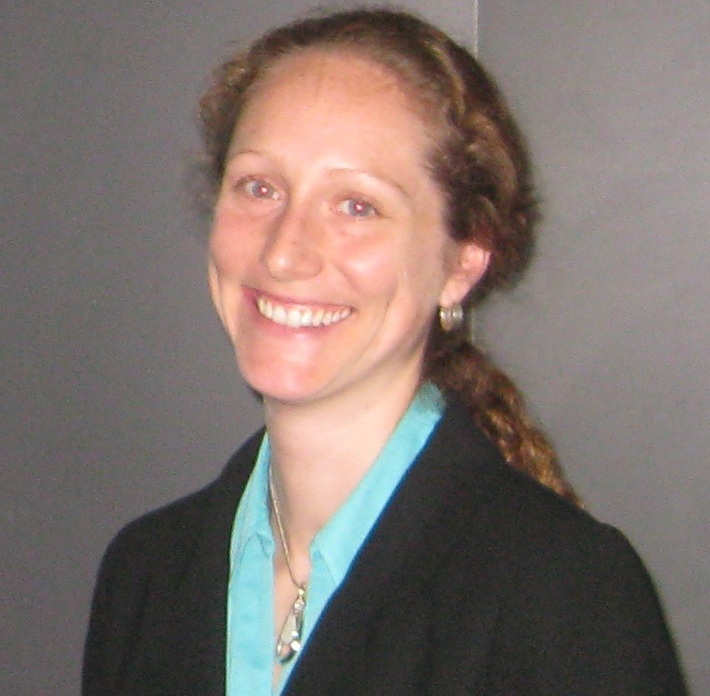

Chemistry Professor Elizabeth Young grew up in eastern Pennsylvania. She went to Haverford College for her undergraduate degree and MIT for her Ph.D.
How did you begin studying chemistry and what made you decide to pursue it?
Actually, in junior high school I didn’t really like sciences very much. I just wasn’t into them. It took a really excellent biology teacher to get me really excited about science. Once I took biology and had a great teacher, I got really into science. Then I took chemistry and then I took physics, and I just decided that out of the three, I kind of liked chemistry the best. Then I went into college thinking I was going to do that and just kind of going for that.
Why did you decide to teach at Amherst?
Well, I also went to a small liberal arts school. I went to Haverford, so it’s a very similar mindset and school structure to here. I really liked being at Haverford and I wanted to be at a place like that to teach. I like the interpersonal interactions between students and faculty and the fact that you meet with faculty. When I did my Ph.D., I was at MIT, which is a big university, and there I saw that the undergrads had virtually no contact with the professors. There were always [Teaching Assistants] there who were always doing recitation sections and all this other stuff, and I didn’t like that as much so I wanted to be at a place where there was more direct contact between students and professors.
What classes are you teaching this semester? What classes are you teaching next semester?
This semester I am teaching “Quantum Chemistry and Spectroscopy,” which is an upper-level chemistry course. In Quantum Chemistry and Spectroscopy we talk about the fundamental basics of chemistry, the physical chemistry parts. So everything you learn in general chemistry, you are kind of just given those as results. In this class we go, take a step back and see how you actually get to those results that you are presented with in a general chemistry class and derive them from the original, fundamental principles. Next semester I will be teaching 161, which is the second semester of general chemistry.
What aspects of Amherst do you like so far?
Right now, I like that I am teaching a small class and that I have a lot of interaction between students. I expect that to continue, hopefully, though not in the big lecture class [but] at least in the recitations. So I like that the students here are motivated and that they work hard and that they ask questions during lectures and are interested in what they are doing.
What do you hope to contribute to Amherst during your time here?
Well, that’s a tough one. Well, in teaching, I hope that I can get people excited about chemistry in the first-year classes. When I am teaching those and when I am teaching upper-level classes, I hope that I can make people excited to learn about where all of these periodic trends and orbitals and where all these things come from and where we get them. So, I am hoping that I can get people excited about chemistry, and I am hoping that I can do some research that is interesting to students and help them learn how to do their own independent research products at a very high level.
Are you currently working on publishing anything? Have you published anything before?
I currently have a student doing a senior thesis project with me, so I have some active research going on in the lab on steady-state [ultraviolet] UV spectroscopy and looking at electron transfers. I am hoping that that will go well and that we can publish on that. In the past I have published in the areas of proton coupled electron transfers and catalysis and other things.
What does your research focus on?
My research is studying fundamental charge transfer processes. Charge transfer can be in a photovoltaic system, so in solar cells you have to absorb light and generate charge, and then that light is turned into electricity. So, that is one way that charge moves, and I want to be able to study that. Another way is that in our body we have charges moving all the time to go to one spot in one kind of protein to another spot where it catalyzes a reaction. There are many different examples like ADP [Adenosine Diphosphate] to ATP [Adenosine triphosphate]. That is a reaction that happens so there are charges transferring in that. In biological systems there is not just one charge transferring, it’s coupled to all these proton motions inside of that protein. That is called proton-coupled electron transfer. So one thing that I am interested in is studying fundamental model systems, that are simpler than the big proteins, [and] to try and understand the parameters at play in moving charge at is coupled to a proton.
What do you like to do in your spare time?
I like to go to the gym. I know that one of the other professors said “what spare time” and I kind of agree with that, but I make time. I go to the gym to play squash and I have also been doing the cardio kickboxing class that they have that somebody in IT named Colleen Keenan runs. So, anyway, I like to go to the gym in my spare time; that keeps me sane.